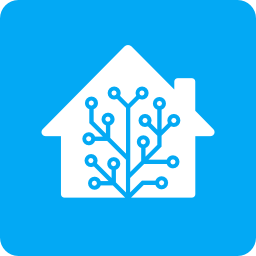Hi. I’m currently rebuilding my setup from scratch, moving away from my old Pi. What’s best practice these days? How would you do it? What cards are the best for the dashboard? How would you do presence detection (getting home), mqtt via ha, or stand alone?
Looking for good ideas, and possibly things to avoid.
TIA.
One learning I had was to prefer devices that used AAA. A lot of the smart wireless devices use button batteries. The pro is that they are smaller but it is annoying finding, ordering and replacing those batteries. AAA on the other hand is way easier to source and you can get rechargeable ones.
Most of the ThirdReality zigbee stuff uses AAA batteries so huge props to them.
For presence detection, we feed our phone’s GPS into HA (I use the minimal version of the app, so a separate app does the GPS feed direct to my HA without Google / Apple datacenters)
I have a large “Almost Home” zone centered around our home, but with a much larger radius - this allows for time delays / bad signal, so that the house can turn on lights, etc. before we arrive.
Then I use ping to detect that we really are at home.
I actually just set up home assistant today and I personally like using a VM. Feels the most straight forward to me. I’m not a huge fan of docker, mostly cause it feels more complicated than it should be. Thats just me though. Either baremetal or in a VM is the way I like to do things, not just home assistant.
How would you do presence detection (getting home)
I have a sensor on my front door that triggers an automation that sends a text to everyone’s phones that is (supposed to) trigger a location update. It then waits ten seconds and checks everyone’s phones to see what wifi network they are connected to, it then waits another ten seconds and if nobody’s location is “home”, or nobody’s wifi is the home network, then it texts everyone an alert of a possible break in.
Only about 50% of the time does it correctly identify someone legitimately coming home lol
I might not go for that solution. 😂
If you can figure out a better way please let me know 😭😭
Best card: use weather.gov’s gifs to create easy radar
Ex:
type: picture image: https://radar.weather.gov/ridge/standard/KLOT_loop.gif tap_action: action: url url_path: https://forecast.weather.gov/MapClick.php?lat=41.8832&lon=-87.6324We moved off a pi onto a proxmox server for better storage etc.
Best cards for the dashboard are the cards that matter most to you. We have our solar stuff, and some switches that we use most, as well as the camera feed for the gate.
As for presence detection, the app has your location and a home/away entity that might be what you are looking for?
That’s exactly what I’m doing as well. Got my VM set up, HAOS installed and bluetooth up and running. Now I’m starting to add my stuff already in my house and I’m looking for good ways to do it. I’ve also added it to tailscale and can access it from my phone.
It’s SOOOO much faster than the Pi.
Maybe get some metrics going with Grafana, makes exploring your data much easier
Tried it a bit, didn’t get very far but will have a look again. Very good tool to have some knowledge about.
Get something small, maybe something like a Lenovo ThinkCentre mini. Put Proxmox on it and install HAOS as a VM. Then when you want to add software, add them as LXC containers on the Proxmox host. Like Z-wave, MQTT, ESPHome, zigbee, etc. I really like having things in separate containers so that way I can work on things separately. If I need to restart the HAOS VM, it’s a lot faster because my entire Z-wave network doesn’t have to restart.
Avoid adding things that require cloud access. I have to have a damned good use case before I add anything that requires Internet access.
Oh and I like this place: https://cloudfree.shop/
Is it better to keep MQTT, Zigbee etc in containers rather than in HAOS itself? Am I not just creating an upgrade/dependency mess for myself?
I think both of these ways are good and valid in their own way, they both have upsides and downsides. For me, having things separated is working well. I especially like being able to reboot HAOS more frequently and as soon as it comes back up all my Z-wave devices are ready to go. Back when I ran Z-wave inside of HAOS it took a lot longer for the Z-wave network to calm down and be ready after a reboot.
@CAVOK
I have two HAOS installations with MQTT as well as ZHA. Mosquito being an add-on, as far as I know it’s a container anyway but ZHA and MQTT are normal integrations and I never have any issues. Generally speaking I always try to stick with what the developers suggest, in my eyes it’s the best strategy to avoid messing up with dependencies as they take care of those.
Avoid using device IDs in automations, use entity IDs instead.
Good tip. Thanks.
That explains all the problems when I got a new phone. Now I know how to fix it properly.
Good question. I was planning to start fresh as well. At least at some point. I think I’m going to first add the devices and do a better job documenting what I have, what firmware I modified how and pay attention to naming things in a coordinated manner, set the areas… And then think about what automations I need, what blueprints are available and newer methods to achieve the same thing. And throw overboard all the testing relics, HACS integrations and ESPhome configs and automations I don’t need anymore and for some reason keep around for reference. And then I’m bad at UI. I think I’d have to watch some Youtube tutorials to see how other people structure it in a sane way. I heard the bubble cards are popular these days.
deleted by creator
Not sure how old your setup is, but if it’s like mine (6+ years old) then a lot of the old ways of doing things via yaml and config files have been moved to the web UI instead.
I’d probably just add functionality slowly and try doing it all the “easy way” first (via the UI), referring to the docs as you go. Treat it as an opportunity to explore all the cool new stuff the team have added!
Yeah, my setup was pretty old. I was using a mix of yaml and NodeRed, but apparently my Pi was now too old for NodeRed so I had to update or migrate, so I went for a proxmox instead.
I did similar recently! Proxmox has been amazing, I wish I did it sooner. It’s so nice being able to spin up as many containers/VMs as I like, and spread memory/CPU/disk as needed between various appliances. I’ve found Home Assistant a little snappier as well.
Well they killed off HA Core, so there’s that.
Make sure you keep regular backups, and move some off device. That’s about it.






